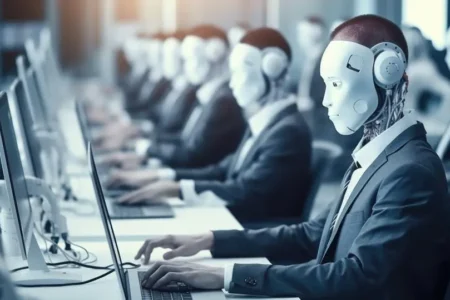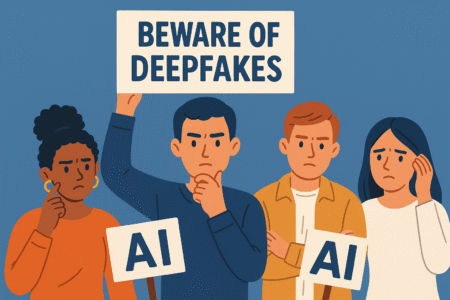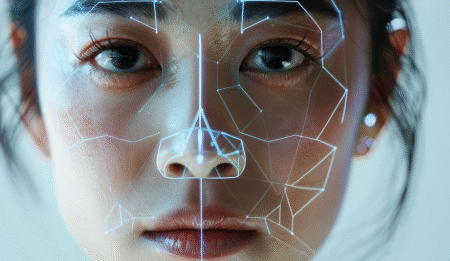In our rapidly changing world, Artificial Intelligence (AI) is everywhere. Machines are becoming increasingly intelligent, too, whether it’s chatbots or self-driving cars. Though cool, many are asking the same question: “Will AI take jobs?” AI has many people feeling job insecurity. They are worried machines will take their jobs. This feeling is real and increasing. In this post, we will look into how AI impacts jobs, what types of work have the greatest risk, and what we can do to prepare ourselves. While these examples show AI making the project easier or projecting potential efficiency, the existence of AI could make the same jobs out of date. Job insecurity refers to people fearing that their job is at risk of disappearing or that their job won’t be safe in the future. Job insecurity is widespread and becoming more common as companies are implementing artificial intelligence (AI) to save time and money. AI is capable of working 24/7, does not need a break, and in many cases, can perform tasks faster than human workers. This serves the interests of a business while also creating fear for workers in general, and particularly workers in jobs that involve routine and repetitive tasks. AI will take away jobs that involve repetitive, data-driven, or manual tasks and positions like: Even creative jobs are replacing traditional roles as a consequence of new AI tools. This isn’t to say these jobs will disappear, but they may look different or become more competitive. Youth entering the workforce may find a shortage of entry-level positions, older workers may struggle to learn new digital tools or retraining, or low-skilled workers may miss the opportunity to reskill quickly. All of these groups also indicate that they have the highest stress and uncertainty levels or full employment. Although AI may eliminate some types of jobs, it also creates new ones. For example: AI trainers: Individuals who are helping AI systems learn how to think.Data analysts: Experts who analyze information to identify trends.Cybersecurity professionals: Protect AI systems from hackers.Digital marketers: As online businesses increase, they will be needed.Robotics engineers: Build and fix intelligent machines.Many new job roles require new skills, meaning people will need to continue to learn. Here are a few simple but effective actions you can take to lower work insecurity: Continue learning – Enroll in an online course on a growing digital skill, AI, or communication.Be flexible – Be willing to try new roles, or even a new industry.Develop soft skills – Things like teamwork, creativity, and empathy are difficult for AI to replicate.Embrace technology – Don’t be afraid of tools; learn how to use them to your advantage.Keep up with industry news – Read about trends in your industry and don’t be caught unaware. Do bear in mind that AI may support your work rather than replace it. There are studies that show that workers who use AI tools often create more value than workers who do not. The expansion of AI represents a massive shift, and like any massive shift, it includes challenges and opportunities. Job insecurity brought by AI is both evident and real, but it is not the end. It is a signal that the world of work is being disrupted. You don’t need to be a tech wizard; it isn’t like you have to go to school for it when you can just learn firsthand. However, you do need to adapt, learn, and grow. As long as you have the right attitudes and skills, you won’t just be able to protect your job, but find something even better in the future. Keep reading foramz
In the last blog, we talked about ways we can save ourselves from the hazards of DeepFake. We all have to face the fact that deepfakes are not going anywhere. They are getting better, faster, and convincing day by day. We have already seen how powerful AI-generated content can blur the lines between fact and fiction, turning political speeches, product endorsements, or even private conversations into tools of manipulation. This is not just a technological nuisance which is a cultural and moral crisis. But amidst this torrent of synthetic content, there is one thing AI can’t replicate: human responsibility. While it may feel like we’re powerless in the face of this deepfake deluge, the truth is quite the opposite. Our greatest defense isn’t just technology—it’s awareness, accountability, and an unwavering moral compass. We don’t just need sharper eyes. We need sharper minds. There are tools and browser extensions. Yes, there are tools and browser extensions. Yes, AI is being used to detect AI. But before you install the latest detection plugin, ask yourself: Am I being a responsible digital citizen? Because it starts with you. It starts with us. If we let convenience override caution, or if we keep forwarding sensational videos without checking their sources, we become part of the problem. Deepfakes, in many ways, are not just an external threat. They’re a mirror held up to society, exposing how quickly we believe what we want to believe, how we often value drama over truth, and how easy it is to manipulate our emotions with a few cleverly edited frames. What can we do to slow down this process of continuous wreckage? We slow down. We question. We observe.We teach our children, guide our elders, and share with our peers.We make it our personal mission to ensure that truth doesn’t get drowned in the noise of illusion. If you’re a teacher, introduce students to media literacy. If you’re a parent, talk to your kids about the dangers of manipulated content. If you’re a creator, add watermarks, disclaimers, and transparency to your work. If you’re just a social media user, pause before hitting “share.” We must start treating digital content like we treat food—check the source, read the label, and don’t consume blindly. On a broader scale, we need to push for stronger verification systems. We need digital platforms to step up—not just with small print labels that say “AI-generated,” but with clear visual indicators, provenance tools, and a no-tolerance policy for malicious deepfakes. And above all, we need collective digital ethics—a culture where we hold ourselves and others accountable for spreading falsehoods. Because no matter how advanced AI becomes, it is still humans who choose to deceive, and it is still humans who suffer the consequences. In a world where anyone’s face, voice, and words can be faked in seconds, the real power lies not in coding lines of defense, but in drawing moral lines. Deepfakes may steal identity, but only you can protect your integrity. So the next time you see a shocking video of a politician saying something outrageous, or a viral clip that seems just a little too perfect—pause. Let your skepticism kick in. Let your ethics guide you. And let truth—not technology—be your compass. Because while AI can fabricate many things, it cannot generate the most powerful weapon of all: An aware and awake human being. Keep Reading Foramz for your daily dose of moral support.
So far, we have talked about all the possible ways through which deepfakes can be a big issue for us, in what ways they can harm our social life, why they are dangerously addictive, deceptive, and disturbingly easy to make. From AI-generated politicians giving fake speeches to influencers endorsing products they have never even heard of. Deepfake revolution is ot just knocking at the door, it is already chilling on your couch. The main question that lies in our minds is, what can we do about it? There are multiple ways through which we can differentiate the fake from reality. You don’t really need a PhD in computer vision to actually spot it; you just need to be a bit more observant. To do that, you will have to notice the following things about the deepfake: 1. Watch the eyes and mouth and the eyes: Deepfakes often have strange blinking patterns or unnatural lip syncs. If the mouth moves weirdly or the eyes look “dead” or glassy, then it is a red flag. DEEP FAKE SPOTTED. 2. Check Lighting inconsistencies: Fake videos often have uneven lighting between the face and the background 3. Glitches in facial expressions: Look closely for overly smooth skin, jerky head movements, or parts of the face that seem to “melt” briefly. 4. Check lighting inconsistencies: Fake videos often have uneven lighting between the face and the background. Use Technology Against Itself AI has made this mess, but AI can help clean it up, too. Several companies and research labs are working on deepfake detection tools, some of which are available to the public. You can use these AU tools to analyze videos and give a confidence score of whether it’s fake or not. Other AI helps you. track and detect deepfake threats globally. A browser can plugin that flags fake media on the go. There are several mobile tools that detect known fake audio/video databases. You can install one software and share the same for additional safety. Lock Down Your Face and Voice If you think that you are not human enough to be faked? Think again. AI models do ot need much to learn your face or voice, sometimes just a few seconds of a podcast or Instagram video is enough to initiate AI models. To avoid this, you should Demand Verification Layers Let us face it, you can not check every video you see. So there should be some platforms that need to step up. Start demanding medi authenticity layers on various apps. Educate Everyone Let us face it, educating and awareness go a long way. You might be a Gen Z all tech-savvy and handy with AI, but not everyone has their fair share of knowledge on AI. Especially the elderly, like grandma forwarding that WhatsApp video of a “famous doctor” saying aliens created COVID? There is no change in that. What the public needs is literacy campaigns, just like we had for phishing scams and fake news. There should be awareness workshops held in schools, colleges, and workplaces. Create bite-sized videos on spotting fake videos and share lisstof trusted news sources and how to verify the content. Encourage yourself in the intergenerational tech learning platforms because deepfakes can not discriminate by age. Keep Reading Foramz.com for your daily source of moral support.
In a world where reality and illusion go hand in hand, deepfakes do not merely deceive the eye—they inflict pain. They bruise reputations, shatter trust, destabilize institutions, and wreak havoc with the very concept of truth. Even though the machinery of deepfakes might be breathtaking, its effects are usually devastating. The victims are not merely presidents or pop stars—but your neighbor, your classmate, your parents, your kids. When Scams Wear a Familiar Face Picture getting a video call from the CEO of your company—hastily, calmly, and reassuringly familiar. He requests you wire money instantly for an acquisition. It sounds like him. The demeanor is the same. You comply, only to learn that you were talking to an empty space. This isn’t science fiction—it’s already occurred. In one instance, a multinational company wired more than $20 million to scammers who employed a fake replica of the CEO to stage the robbery. The most chilling aspect? It was virtually impossible to tell the real from the fake—until it was much too late. This is not just limited to the boardroom. Scammers today impersonate celebrity voices, creating fake endorsement testimonials for questionable products. These are slick, convincing, and hard to refute—particularly for the elderly or vulnerable citizens who are less versed in AI deception. The consequence? Shattered confidence, pilfered funds, and rising fear. Politics Under Siege Now picture an election week in a weak democracy. Then, out of nowhere, a clip comes up of the front-runner promising communal violence or admitting to vote rigging. It goes viral on WhatsApp channels and TikTok. Even if it’s soon disproved, doubt has been sown. Trust fractures. Votes change. A democracy shakes. We have glimpsed shadows of this situation already. In Ukraine, a deepfake of President Zelenskyy telling soldiers to surrender shook national morale temporarily before it was revealed to be a lie. In the UK and US, deepfake audio recordings have impersonated political figures making racist or inflammatory comments. The threat of disruption is immense. When democracy is used as a stage of illusions, who are the public supposed to trust? Personal Dignity Exploited The most stomach-churning effect of deepfakes is probably the invasion of personal privacy—particularly against women and teenagers. AI software is being applied to “nudify” individuals, producing realistic non-consensual pornography. These aren’t mere pictures. They are weapons of humiliation, blackmail, and psychological warfare. In Australia, a popular sports presenter was appalled to discover that her famous face had been superimposed on explicit photos that were being shared online. Students in India and South Korea have even been subjected to harassment and humiliation by classmates through deepfake nudes. The victims are silently suffering—most too afraid to come forward, not knowing whether the law can assist them, and traumatized by having their trust broken. No one is exempt. Your daughter’s school picture. A friend’s selfie on social media. A coworker’s vacation video. In mere moments, these can be manipulated and made into something ghastly. The damage that remains is not digital—it is psychological, social, and deeply human. Our Eyes Deceive Us What is frightening about deepfakes is how well they can emulate the real. Research indicates that we humans can only correctly identify deepfakes 24% to 62% of the time, depending on the context. That implies that the majority of us are getting it wrong more often than we realize. And worse, we’re also arrogant—convinced that we know the difference when we actually don’t. The reality is, we’ve moved into a new era where an eye no longer confirms what it sees. If video can’t be relied upon, what becomes of witness testimony? Of journalism? Of evidence in court? Of the emotional connections we make through glimpsing a loved one’s face or listening for their voice? The illusion isn’t merely visual—it’s one of existence. Social Media: The Breeding Ground Social media virality is kerosene on fire. Social platforms such as X, Instagram, and TikTok pay attention to interaction, not accuracy. A salacious deepfake goes further and wider than any fact-check soberly done. In India, 77% of misinformation is created on social media—where algorithms don’t ask “Is it true?” but “Will it go viral? This is not by chance. These sites’ designs favor shock rather than substance. The more sensational the material, the greater the number of clicks, and the stronger it survives. Here, deepfakes are not just invited—they’re rewarded. And that leaves each of us in an ongoing state of uncertainty, suspended between fact and fiction. The New Faces of Bullying and Blackmail We worried about schoolyard bulling. Now we worry about deepfake bulling. Teenagers are producing videos of students doing things they never did—saying things they never said. The damage is devastating. Some victims are ashamed to even complain. Others are gaslighted, told it’s “just AI,” or “not real,” when the harm they experience is very real. In their most evil forms, deepfakes are being used for sextortion. A kid is coerced into thinking that there are incriminating photos, when there aren’t. Or an actual photo is manipulated just enough to be a weapon. The threat is chilling. And the emotional consequences—shame, guilt, fear—are toxic to young minds. What’s at Stake Let us be unambiguous: deepfakes are not a prank or a trend. They are an ethical test for our society. They challenge us to consider: do we cherish truth over convenience, trust over traffic, humanity over clicks. If left unchecked, deepfakes will lead us down a path where nothing can be believed, no one can be trusted, and every image, every voice, every story is suspect. That is a world without truth. And a world without truth is a world without justice, without community, without hope. Hope Is Still Possible But here’s the good news—resistance is on the rise. Technologies are developing to detect and flag manipulated media. New legislation, such as the U.S. TAKE IT DOWN Act, is being proposed to safeguard victims. Nations such as Australia are incorporating deepfake awareness into schools. India is considering reforms under its future Digital
In a more digitized world, fact and fiction have been blurred perilously. From the feeds of social media to news websites, we now inhabit a world where believing is no longer seeing. The twin menaces of misinformation and deepfakes are not hypothetical—they are redefining our views, cheating institutions, and eroding democratic confidence worldwide. The term deepfake refers to hyper-realistic synthetic audio, images, or video created using generative AI. What began as a niche tech curiosity has turned into an omnipresent threat. According to a recent global survey, 60% of people were exposed to at least one deepfake video in the past year, and over 95% of these videos were generated using open-source tools like DeepFaceLab. At the same time, the economic toll is astronomical: global fraud losses attributed to deepfakes already amount to tens of billions, with estimates projecting $40 billion in losses by 2027. These fakes are not raw make-believe. A TIME probe into technology such as Google’s Veo 3 found that deepfake videos can show riots, political speeches, election tampering, and more—with sound, realistic movement, and situational realism so intense that they’re virtually indistinguishable from real life . Why deepfakes are dangerous ? Political deepfakes pose a danger to democracy itself. Threats during the 2024 European and American elections highlighted potential interference. Although a Financial Times analysis subsequently discovered only 27 viral AI election deepfakes in the UK, France, and EU, and just 6% of U.S. election disinformation used generative AI—the danger is still foreboding . Deepfake scams are flourishing. Frauds increasingly use celebrity faces and voices to deceive innocent victims—resulting in huge amounts of money lost. The FBI found that almost 40% of scam victims in 2023 were presented with deepfake material, and deepfakes-related fraud in Asia‑Pacific alone grew by 1,530% in one year. 2. Non-consensual exploitation For others, the danger is highly intimate. People—particularly women and adolescents—are becoming victims of “nudify” apps, sextortion, and unwanted deepfakes. There are rampant cases in Australia and South Korea that have prompted immediate legislative and educational action . Humans are not immune. Research indicates that individuals accurately detect only 24–62% of deepfakes, depending on the medium, and tend to overestimate their ability to do so. Add generative AI words and audio into the equation, and we’re immersed in a whirlpool of manipulative content. Deepfakes flourish where virality is designed. X, Meta, and TikTok are such hotspots: recent Indian data indicates 77% of disinformation begins on social media, with Twitter and Facebook at the forefront. Volatile, algorithmic content goes further and faster than rational facts, so disinformation is difficult to contain . Tech-driven detection AI detection software is competing to stay ahead. Initiatives such as Texas State University’s model registered 96.4% detection rate in 2023, and Chinese initiatives reported more than 90% accuracy. India’s very own Deepfakes Analysis Unit employs WhatsApp-based flagging to examine content before national elections. Media literacy & public awareness Experts insist that identifying pixel-level errors is not sufficient. The AI model creations these days are too sophisticated. Users should, instead, raise questions of source credibility, take motive into account, and crosscheck through credible journalism. Countries such as Australia are implementing deepfake teaching in schools as part of wider digital literacy initiatives . Regulatory action Governments across the globe are stepping up. The U.S. has just passed the TAKE IT DOWN Act (May 19, 2025), requiring platforms to quickly take down non-consensual intimate deepfakes. The AI Act is implementing risk-based regulation in Europe. India is weighing targeted reform under its draft Digital India Act . The battle against deepfakes and disinformation requires a multi-fronted approach: Only by swift, concerted action can society preserve truth and trust. The age of deepfake isn’t arriving—it’s already arrived. Real-world effects—from subverting elections to destroying lives—are already playing out. Yet there’s also reason for hopeful restraint: human beings are waking up, technologies are improving, and laws are adapting. By equipping ourselves with understanding, technologies, and cooperation, we can reclaim fact-driven discourse before fiction seeps too deeply into everyday life. Keep reading Foramz for your daily dose of moral support.
In the last Blog, we saw how AI is taking its speed and taking over the tech world. How AI has no longer remained a futuristic concept. It has become an integral part of our everyday lives and workplaces. From automating mundane tasks to analyzing vast amounts of data in seconds, AI promises tremendous efficiency and innovation. Today, this advancement also brings a pressing challenge: the replacement of human jobs. AI is impacting various sectors, it is important to have awareness of how AI is taking over these sectors, so that individuals can prepare wisely for the future. One of the most vulnerable sectors is customer service. AI-powered chatbots and virtual assistants are increasingly being used. customer inquiries, complaints, and support tasks. These systems can work 24/7 without any fatigue, by addressing multiple customers simultaneously. Jobs such as a call center agent and a customer support representative are at risk of being replaced or drastically reduced. Another sector feels the impact is in administrative and clerical work AI systems can schedule calendars, schedule appointments, filter mail, and enter data with speed and accuracy that human capacity cannot match. Administrative assistants and data entry clerks tend to do repetitive tasks, are subject to automation, leaving fewer human jobs for these types. Industrial manufacturing and warehousing have for a long time experienced automation via robotics, but AI is going a step further. AI-powered robots and smart machines are now undertaking assembly line work, packing, and stock management with high accuracy and minimal mistakes. This has put manual work in factories and warehouses at risk, as businesses try to save money and enhance efficiency with automated systems. In transport and delivery, autonomous vehicles and drones are revolutionizing the scene at a fast pace. Delivery drones and autonomous trucks are able to drive around the clock without break or fatigue. This technology jeopardizes drivers and delivery agents, potentially replacing millions of jobs globally as the technology advances and regulatory barriers are broken. The retail industry is also transforming under the control of AI. Self-service checkout lanes, AI-based inventory management, and AI-based personalized shopping assistants through machine learning are eliminating the requirement of cashiers and stock clerks. Although this could help improve customer experience, it also poses a threat to traditional retail employment. Equally so is the accounting and finance industry undergoing a transformation. Algorithms using AI can scan financial information, create reports, flag fraudulent activity, and even place trades quicker than human experts. Low-end accounting and finance jobs that generally entail repetitive data processing are more being taken over by machines, leaving employees under pressure to reskill or seek alternative niches. In healthcare administration, AI can aid in patient scheduling, record keeping, and even diagnostic assistance. These functions can enhance the efficiency of services but also decrease the need for administrative personnel who undertake routine, non-clinical work. Even the judicial world cannot escape. AI tools are able to scan legal documents, analyze case law, and make prognostications about legal outcomes, which impacts jobs traditionally performed by paralegals and junior attorneys. This trend encourages legal professionals to concentrate more on sophisticated, strategic work instead of time-consuming paperwork. Despite all of these challenges, AI is also generating new job opportunities. There is increasing demand for AI engineers that develop and operate smart systems, data scientists that explain insights produced by AI, and AI ethics advisors who guarantee that technology is being utilized responsibly. Moreover, new careers are arising that enable human-AI collaboration, integrating technological expertise with characteristically human abilities such as creativity and emotional understanding. To succeed in this evolving world, ongoing learning and flexibility are crucial. Employees need to be open to improving their skills, adopting new technologies, and being adaptable in their professions. Instead of dreading AI as a job stealer, it’s healthy to perceive it as a productivity-enhancing tool that could create new opportunities. In conclusion, AI is undeniably reshaping the world of work. While some sectors face job losses, others are evolving or emerging, offering fresh opportunities. Staying informed, adaptable, and proactive will be key to navigating this AI-driven future successfully. Keep reading Foramz for your daily dose of Moral support.
The conversation around Artificial Intelligence (AI) and its impact on jobs is no longer a distant warning, it is a present-day reality. From retail and customer service to fiancae and journalism., AI has taken over the industries. Healthcare industries also have AI, which is transforming healthcare at a pace that is both exhilarating and unsettling. What was once confined to science fiction is now reshaping how we work, hire, and even define productivity. While AI brings remarkable advancements in efficiency and innovation, it raises critical concerns for us human professionals. It raises unsettling questions like: Are human workers becoming obsolete? Will automation trigger mass unemployment, or are we simply transitioning into a new kind of workforce? Artificial Intelligence, like machine learning, natural language processing, and robotic process utomatiare being adopted globally to handle tasks once performed by humans. Some of the key areas of job disruption include Customer Service, Manufacturing, Transportation, Finance, and Content Creation. Jobs Most at Risk vs. Jobs Being Created Researchers (World Economic Forum and McKinsey reports, among others) agree that AI will replace and create jobs: Most at risk: data entry clerks, telemarketers, bookkeeping clerks, and assembly line workers. In demand: AI engineers, data scientists, cybersecurity specialists, human-machine interaction designers, and AI ethicists. It is an expression of duality rather than disappearance of work. As repetitive or rule-based work is being assumed by AI, it is creating opportunities for new types of work demanding skillfully human abilities such as empathy, creativity, ethical thinking, and problem-solving at a deeper level. In spite of the apprehensions, AI is not endowed with the emotional quotient, moral sense, and flexibility of the human mind. In most professions, including education, counseling, care giving, and management, the human element cannot be replaced. The next generation of work will probably witness a synergy between humans and machines, with AI doing the grunt work and humans guiding the strategic, ethical, and relationship dimensions. AI is not only displacing jobs—it’s transforming them. Adaptability is the secret to success in this age: re-skilling, up-skilling, and embracing a culture of lifelong learning. Governments, corporations, and schools have a vested interest in getting society ready for this transformation. Instead of fighting automation, we need to ask: How do we harness AI to work with us, not against us? In our next blog, we will discuss the problems that AI can create for us. Keep Reading Foramz for your daily dose of Moral Support.







